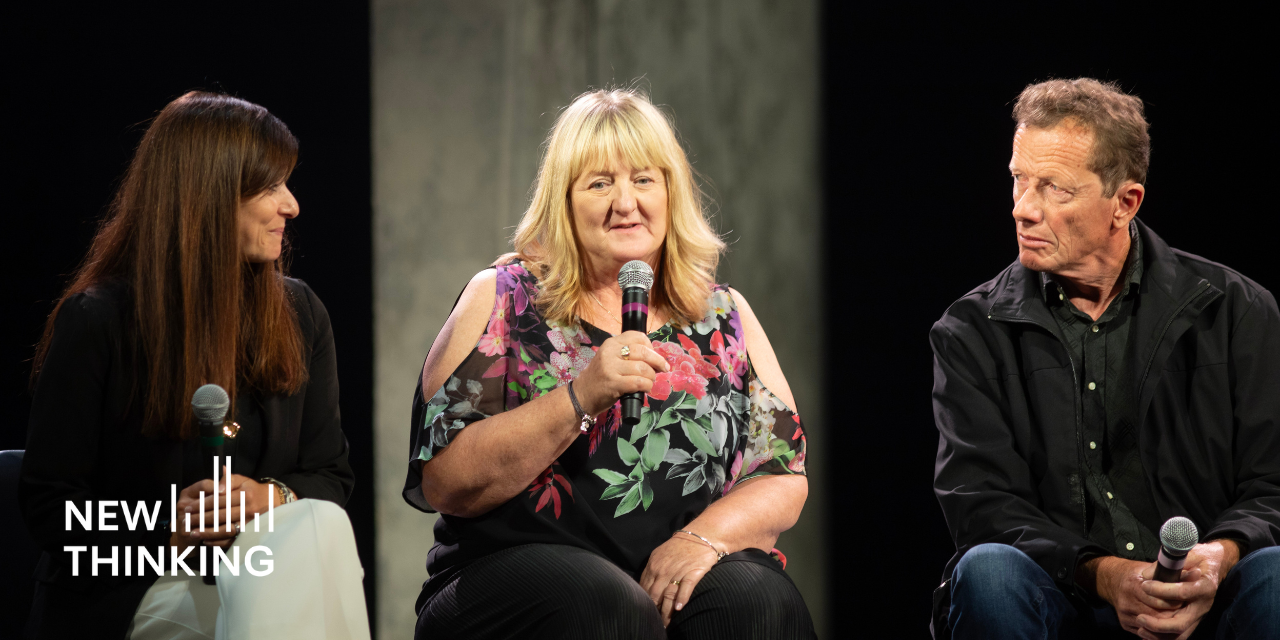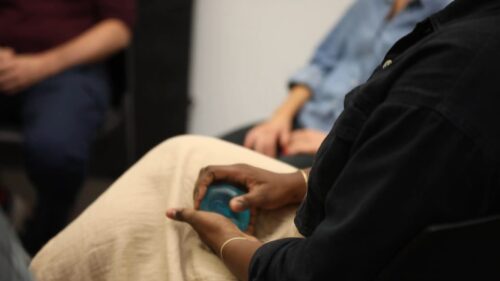Gerianne Abriano has been Bureau Chief for the Kings County District Attorney’s office at the Red Hook Community Justice Center in Brooklyn, New York, since March of 2001 and, before that, spent two years as a prosecutor in the Brooklyn Treatment Court. Abriano sat down with the Center for Court Innovation’s Carolyn Turgeon to talk about her experiences.
How did you get involved in drug courts?
First of all, drug treatment has always been a large part of what the Brooklyn District Attorney’s Office has done for most nonviolent drug-abusing offenders. Charles Hynes created DTAP—or the Drug Treatment Alternative-to-Prison Program—back in 1990 before any drug courts in Brooklyn existed. DTAP offered residential treatment to second felony offenders and dismissal of their cases at the end of successful completion of treatment. So I was indoctrinated into the whole alternative-to-incarceration theory from the first day I started in the office back in 1994, and I think that we’ve been true leaders in that area.
Also, my background is that I have a Bachelor’s degree in sociology and worked for 12 years as a social worker in a hospital before I went to law school. So the idea of combining social work with the law was very appealing to me. And you can see the amazing success any time you’re in drug court. When people came back for their progress reports it was always heartwarming to me to see how they were physically transformed, mentally and emotionally transformed, leading non-criminal lives and basically just getting it all together. When we opened the Brooklyn Treatment Court, I said that I would be interested in working as the prosecutor there.
Working in the drug court was a wonderful experience. I got to learn so much more, obviously, about how it works, and I got to attend a lot of conferences and really become as close an expert as you can be in the workings of drug courts. It was a totally positive experience for me.
How do you view the prosecutor’s role in drug courts?
I think the role of the prosecutor can vary depending on the state that the court is in. It is extremely important that the prosecutor play a part in developing the policies and implementing those policies to ensure that there’s accountability and that the treatment providers are doing their jobs. In Brooklyn, the prosecutor independently reviews the new cases to screen for eligibility. After that, it is a true team effort. I had the good fortune to work with a phenomenal Judge (Judge JoAnn Ferdinand) and an awesome Legal Aid attorney (Justin Barry).
What we’re doing in Brooklyn Treatment Court is saying we’re going to give you this opportunity and, if you succeed in treatment, we’re going to dismiss your case. From my perspective, I want to feel 100 percent assured that defendants are doing everything that the program says they’re doing, that I know when they test negative and I know when they test positive. While I believe that ensuring accountability is a big part of the prosecutor’s role, I also believe that flexibility and the ability to look at each case independently is also important. Sometimes we would be out in the hall discussing a participant’s progress and I was the one saying, “I really think this woman needs another chance.” And the defense attorney would be shaking his head like, “What is she saying?” So I think you need to have a prosecutor who really believes in the process; that’s important.
What do you say to prosecutors who think drug courts are too soft?
There are a lot of lawyers who view problem-solving courts as too social work-y. The philosophy of our D.A. and of our office is that that is a misperception. We feel that it’s our job to keep our community safe and to reduce crime whenever possible. If what we’re doing is keeping this person from re-offending, then we are doing what we’re supposed to do as prosecutors. It doesn’t matter what gets you there. I think it’s narrow-minded to think you can only achieve that by putting people in prison. It’s been proven that drug court is way more cost effective than prison and the recidivism rates are substantially lower.
Also, at Brooklyn Treatment Court, participants have already entered a guilty plea, so you can impose sentence if they fail. It is not soft. It really is a no-lose situation from the prosecution perspective.
But having said that, you’re still not getting exposed to these different ideas in law school, so you have a lot of people who become prosecutors whose only vision of prosecutors is what they see on television. And you don’t see drug courts on Law and Order.
You say drug court is non-adversarial, but do prosecutors and defense attorneys ever disagree about the kinds of sanctions that are appropriate?
In Brooklyn Treatment Court there are clear-cut policies regarding sanctions. So you don’t have a defense attorney screaming, “No, no, that’s not fair!” because it’s there in black and white. In fact, both the prosecution and the defense bar were involved in formulating the sanction and reward schemes. And similarly you don’t have the prosecutor saying, “I demand a sanction!” Instead, 99 percent of the time we are in agreement.
Is adversarialism ever appropriate in drug court?
Yes, absolutely. First of all, up until the plea is entered (if, in fact, one is) the process is completely adversarial. The prosecutor assesses the strength of the case, determines if treatment will be offered at all (those selling drugs for profit are not considered), and decides whether a misdemeanor or felony plea will be offered. Similarly, the defense attorney advocates for the client based upon their assessment of the case, and sometimes opts to fight the case and not take a plea. That is the heart of the adversarial process. Also, there were times (post plea) when you had to be adversarial. If there was someone who was playing the system or you knew was blatantly lying or had been given enough chances, there were times when I would say, “OK, that’s it. Enough! Sentence has to be imposed.” And the defense attorney would argue for that final final final chance. So there were some occasions, certainly, where we were each more adversarial, but they were really the exception. And, of course, in scenarios where we couldn’t agree, the judge, as in traditional adversarial courts, had the final say.
Most drug courts follow, or try to follow, a set of guidelines known as the 10 Key Components. What do you feel personally are the most important components of a successful drug court?
I think the non-adversarial approach is crucial. It’s almost like raising children, and I don’t mean that in a condescending or patronizing way, but in the same way that parents put up united fronts so that the kid doesn’t manipulate one or the other parent. Similarly, I think the reason it’s really important to have that non-adversarial approach is because you don’t want the defendant to have the ability to play the defense attorney off the prosecutor. When the defendant sees that we are all on the same page, they take it more seriously because it takes away their ability to manipulate.
I am also totally in love with the graduated sanction scheme because it’s proven to be really effective. And I think that it’s really important to look at each participant individually and to come up with a treatment plan that’s unique for them, including aftercare. That’s something that Brooklyn Treatment Court has and not every court does have. You don’t want to heal this person, get them drug free, and then throw them to the wolves. I think it’s imperative for drug courts to have educational training, vocational training, and other resources that are going to allow participants to maintain their drug-free lives. And so I think aftercare is critical, along with working with proven agencies and providers that you trust.
You’re now the top prosecutor at Red Hook’s community court. How has working at the Brooklyn Treatment Court informed your work? Do you use drug court principles in community court?
We’re not a drug court but we use a lot of the principles of drug court. The whole concept of giving someone an opportunity to proceed in life without a criminal record, for example—that’s the opportunity afforded to a lot of the participants in drug court. Here at Red Hook, I’ll often say to the offender, “Take this mandate and do all of these things and when you’ve done that I’ll dismiss your case.” So it’s that same theory of working off the plea. It’s a great method because with post-plea intervention of any kind, once the defendant takes the plea you know that if they totally screw up, the sentence can be imposed. It really is a fair trade because, in most cases, the offenders are afforded the opportunity to work towards having their case dismissed. If they succeed at completing the mandate, not only is their case dismissed, but they have, hopefully, learned something valuable along the way.
February 2005

